An excursion from Trier to Luxembourg
On Monday (October 15th), we reached our furthest point up the Mosel River, the city of Trier. We spent 2 nights there, with the afternoon of our first full day being spent on a motorcoach tour to Luxembourg (the country and the city of the same name). Like all the other passengers we talked to about it, we were underwhelmed – Luxembourg apparently grows on some people, but at a quick look it’s just a city with some very old ruins. Worth seeing, for sure, but it’s not on our “must return” list.
Just after 9:00 am, we passed the Km 175 sign on the Mosel, 175 km upriver from where it joins the Rhine River. Some parts of the river are very quiet, while others show heavy a human presence even when far from any cities. The rivers are very well marked by such signs, not just whole kilometers, but tenths of a kilometer as well.
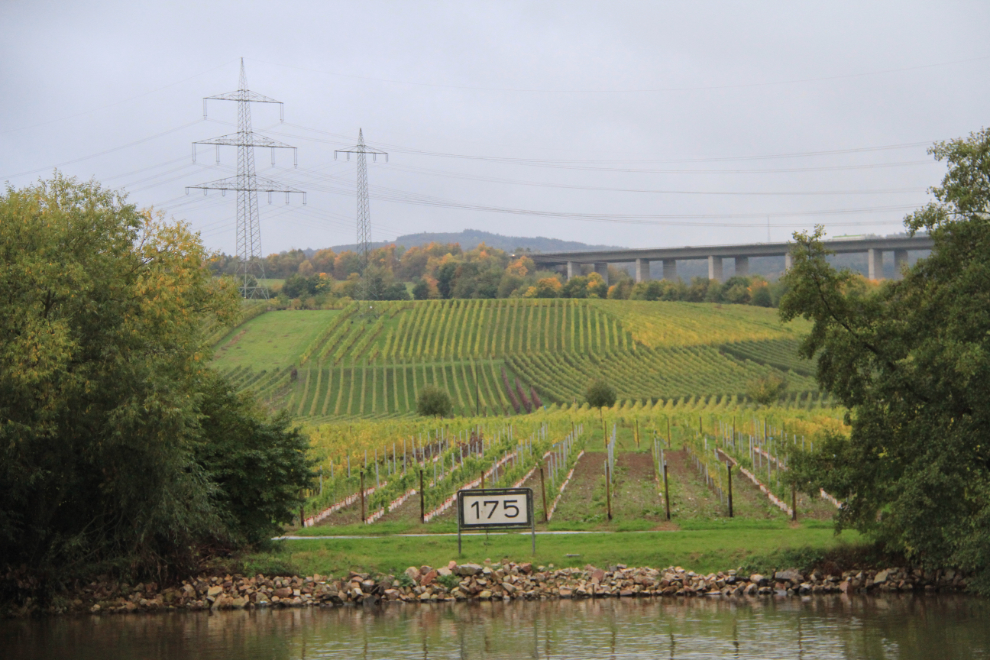
The transportation infrastructure is quite remarkable, both in rail and highway terms.
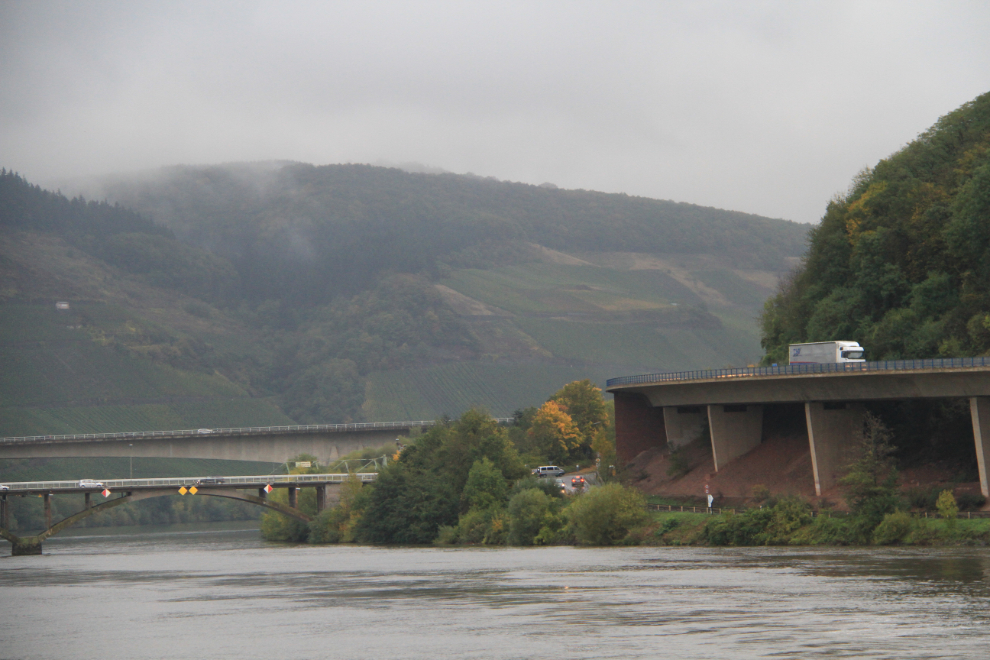
This is as far up the river as we got – the ancient city of Trier. The River Queen can be seen on the right side of the river. We reached Trier at about 11:00, and I of course went for a walk to see what was nearby.
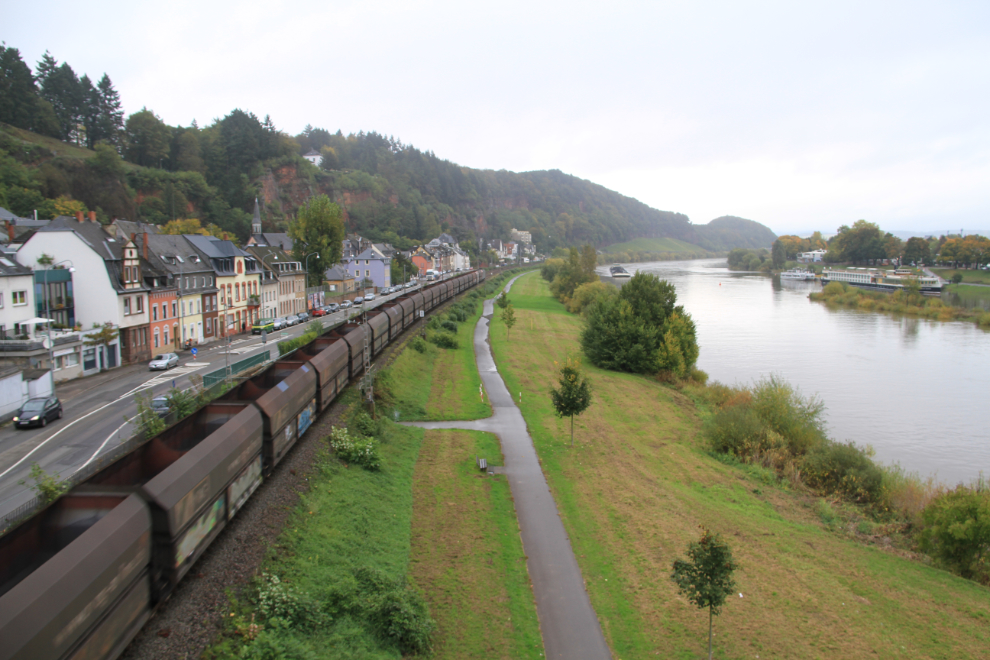
I’m intrigued by a lot of odd things. This building of unknown vintage is abandoned, but as it could stand for centuries that way, a wooden “gutter” has been bolted to it so that any of its slate roof tiles that fall off don’t hit pedestrians below.
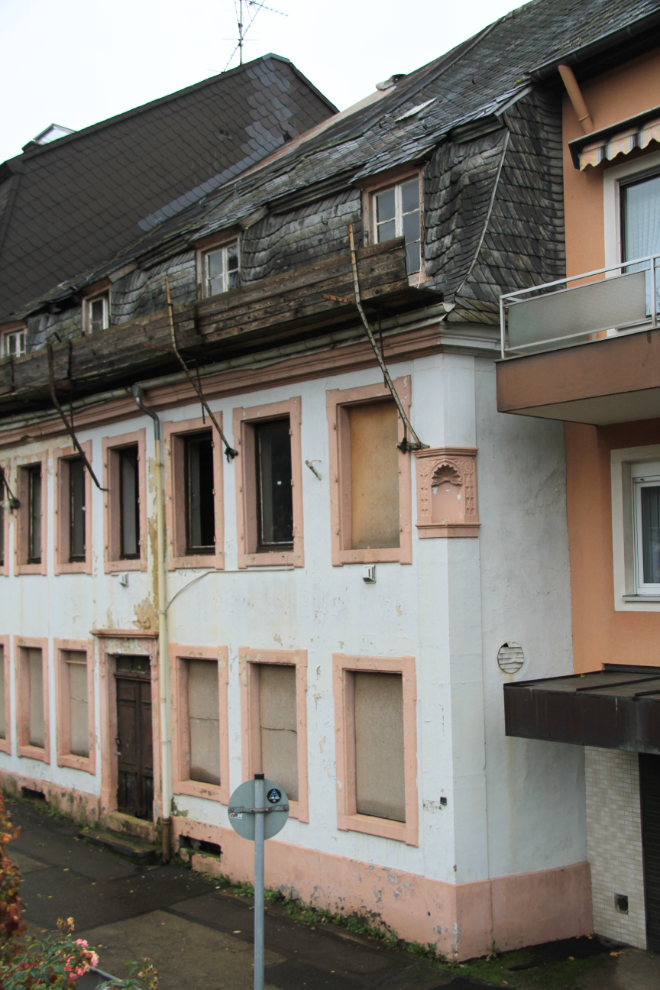
At 1:00 pm, we boarded 3 coaches for the 1-hour trip to Luxembourg. As usual, it was raining. We’ve had awful weather – unusual for this time of year, but it was apparently a cold, wet summer as well, as we had in the Yukon.
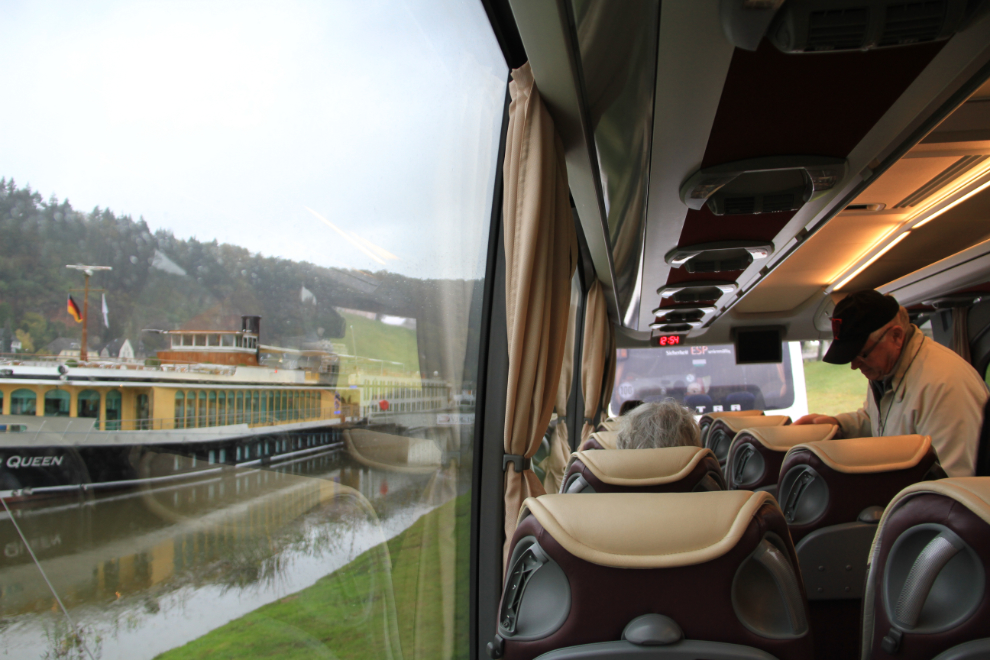
On the road…
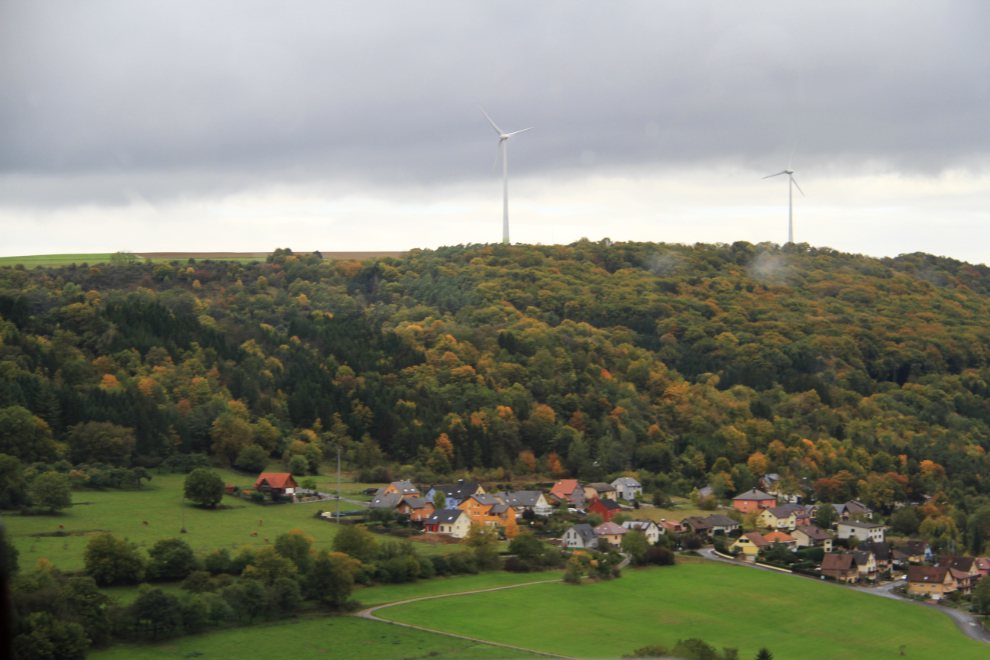
Our first stop was at the Luxembourg American Cemetery and Memorial, where over 5,000 men killed in the area in World War II are buried.
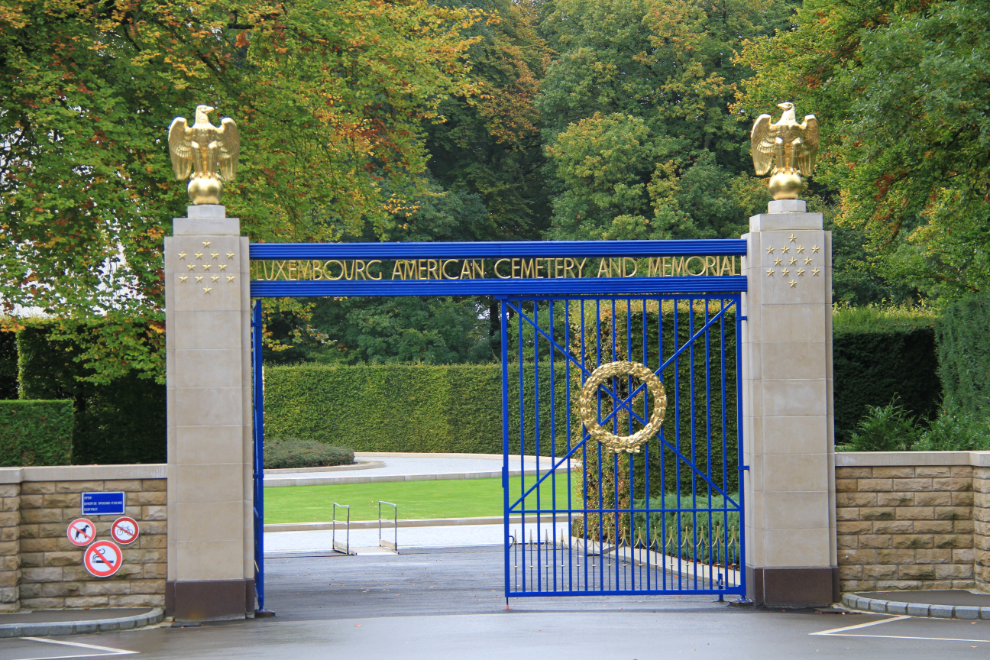
The simple grave of General George S. Patton, in front of his men.
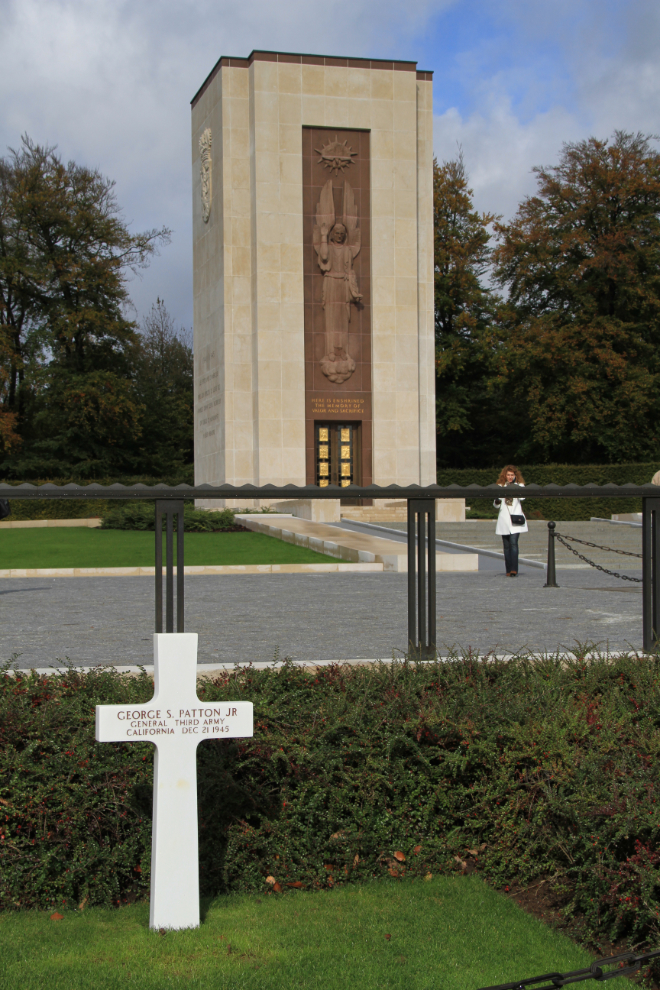
It’s incredible what people can do to each other… 🙁
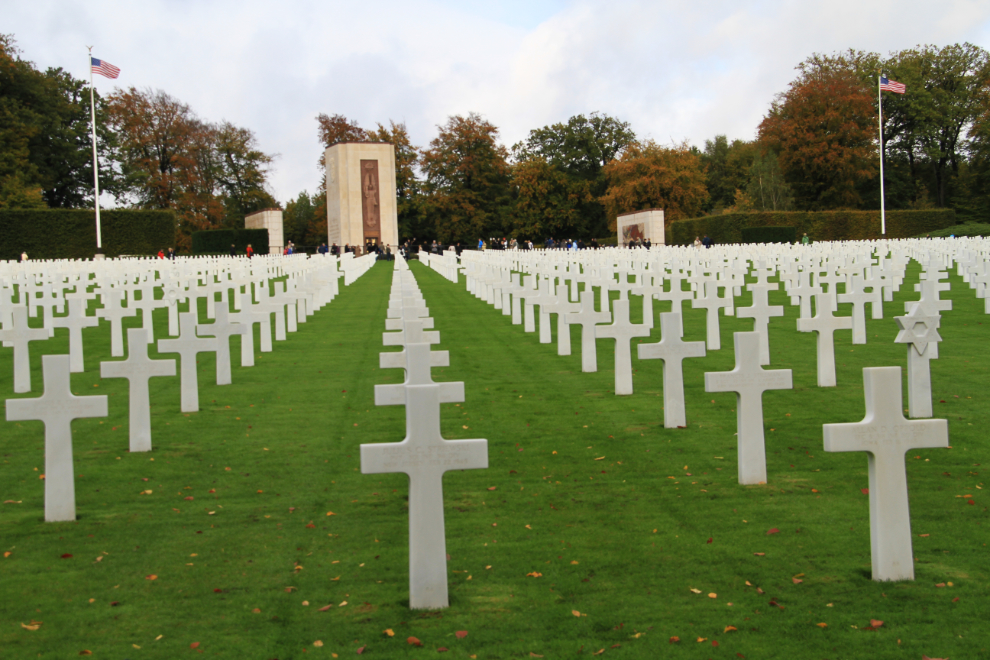
Our motorcoach drivers have all been highly skilled – the places they get into and out of are sometimes very tight. This spot in the historic district of Luxembourg was one of them.
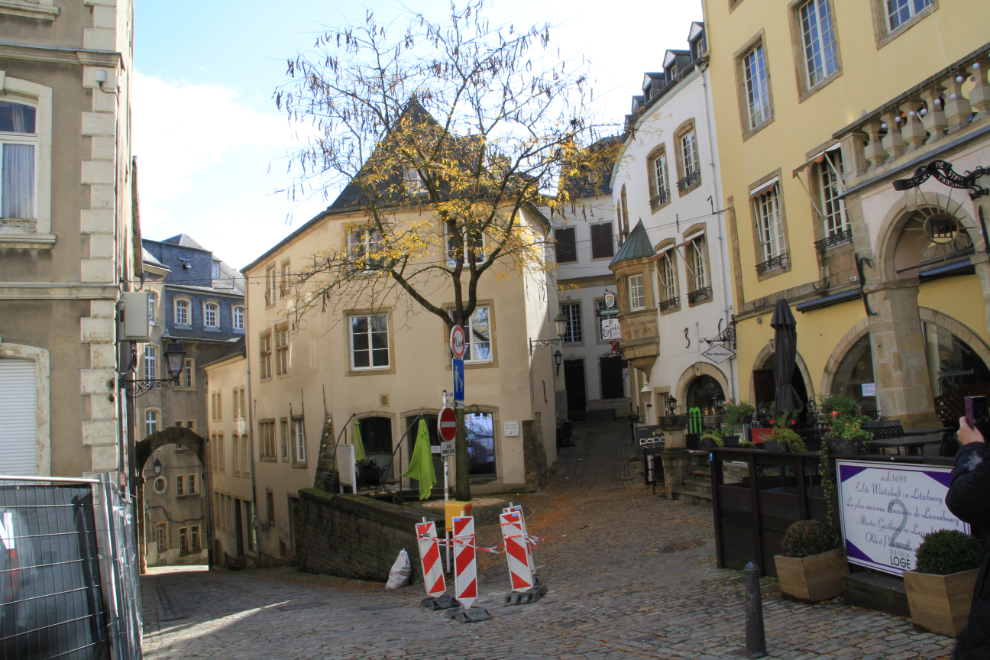
Luxembourg dates back to the year 963 – the ruins are very impressive.

Hearing any emergency equipment is very unusual, and seeing a police car going somehwere at high speed is extremely rare.
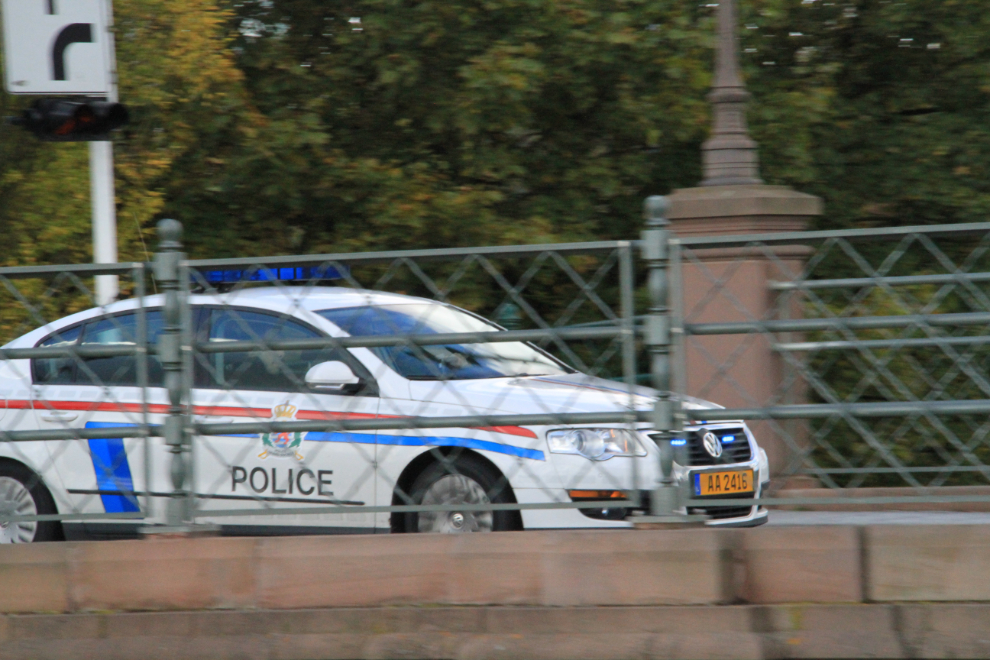
This has been called the ABC tour – Another Bloody Church 🙂 We just popped our heads into this one for a quick look – some people might be getting bored with them, but neither Cathy nor I are.
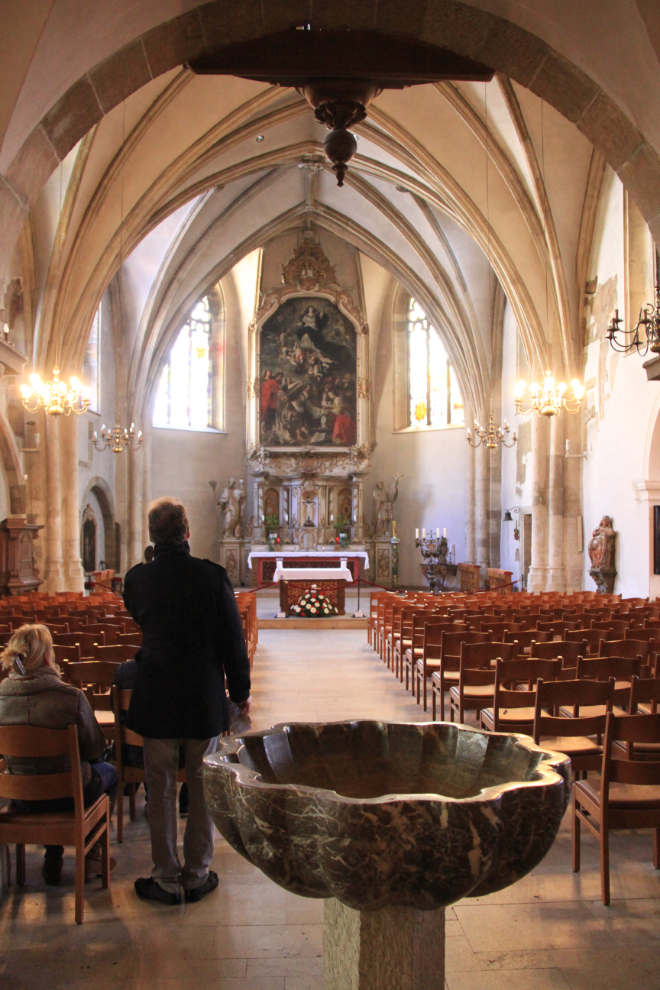
We drove though the banking and administration district on the way into the city, but didn’t stop. There are some gorgeous new buildings there, though.
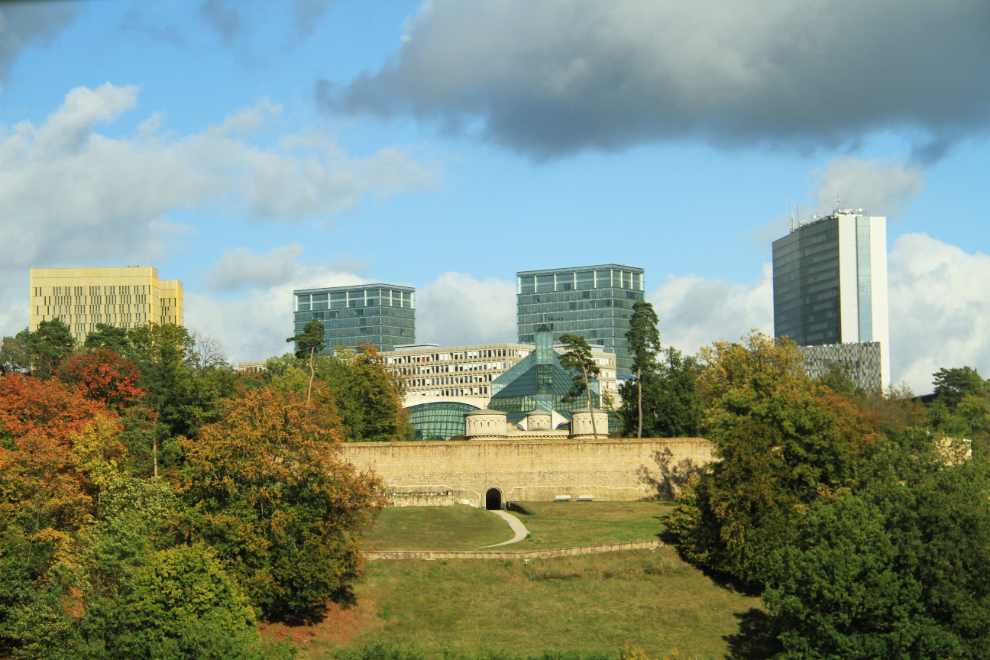
There appears to be a borrow-a-bicycle program in the city. I saw a few of these racks but didn’t see any being ridden.
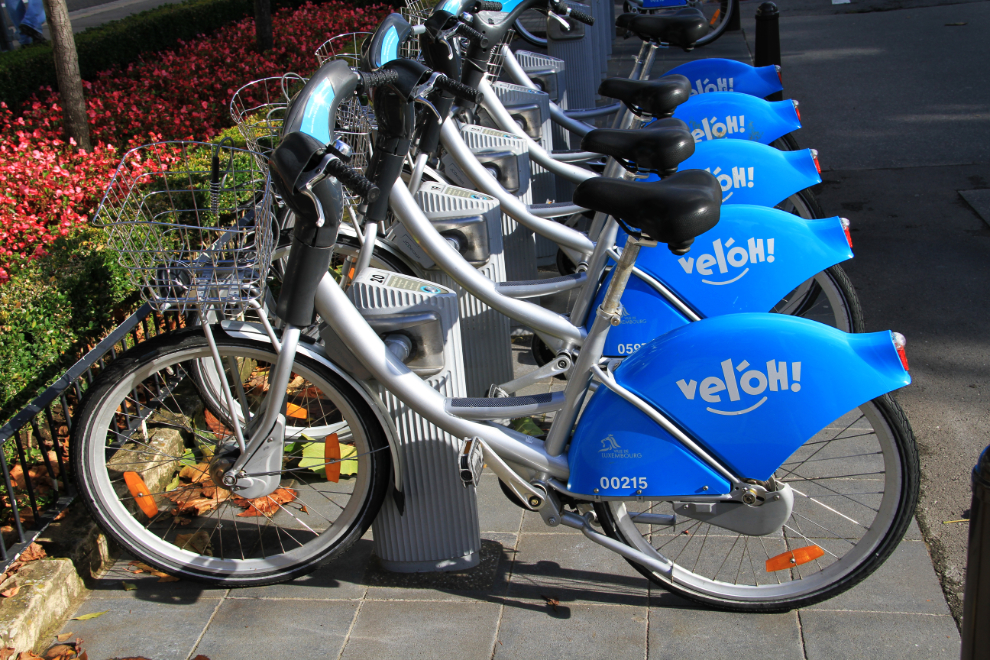
Does that mean that the city has free Internet? Another little mystery to check out when I have time and good Internet access.

Our plans got modified due to a royal wedding happening this weekend – both the cathedral and palace were blocked off in preparation. Our guide is right into the royal family, and had lots of stories and photos to share with the group – zzzzzzzz…. 🙂
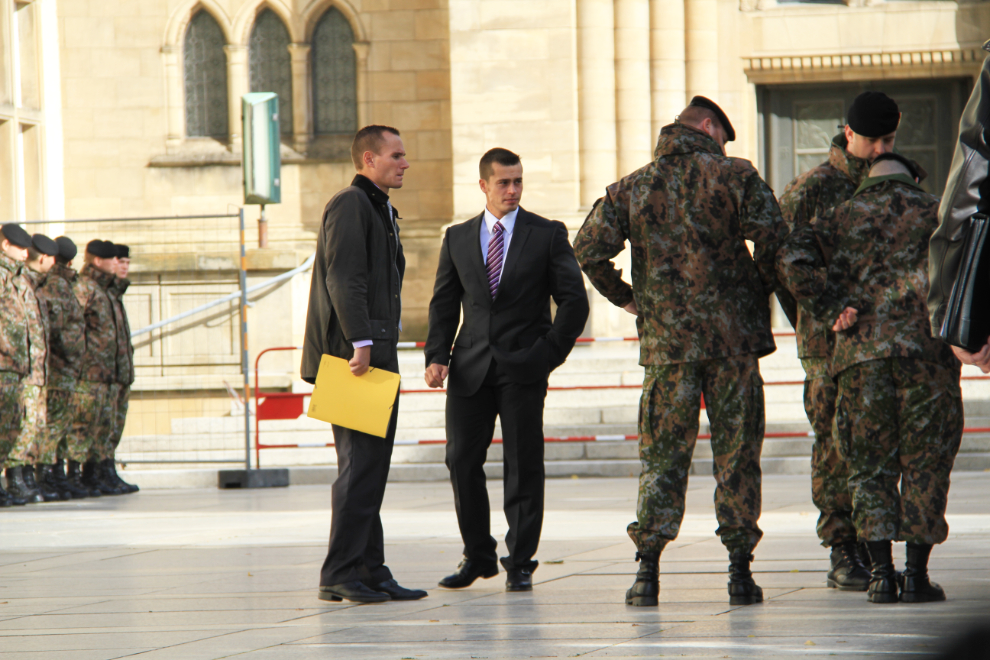
The Luxembourg shield.
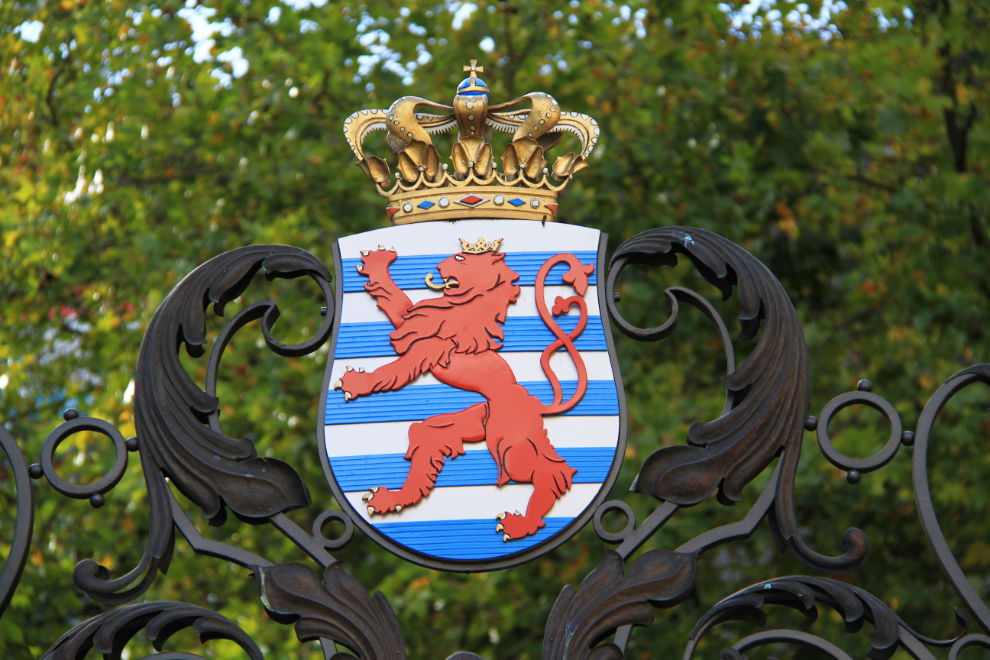
Lots of shops are set up for wedding souvenir hunters.
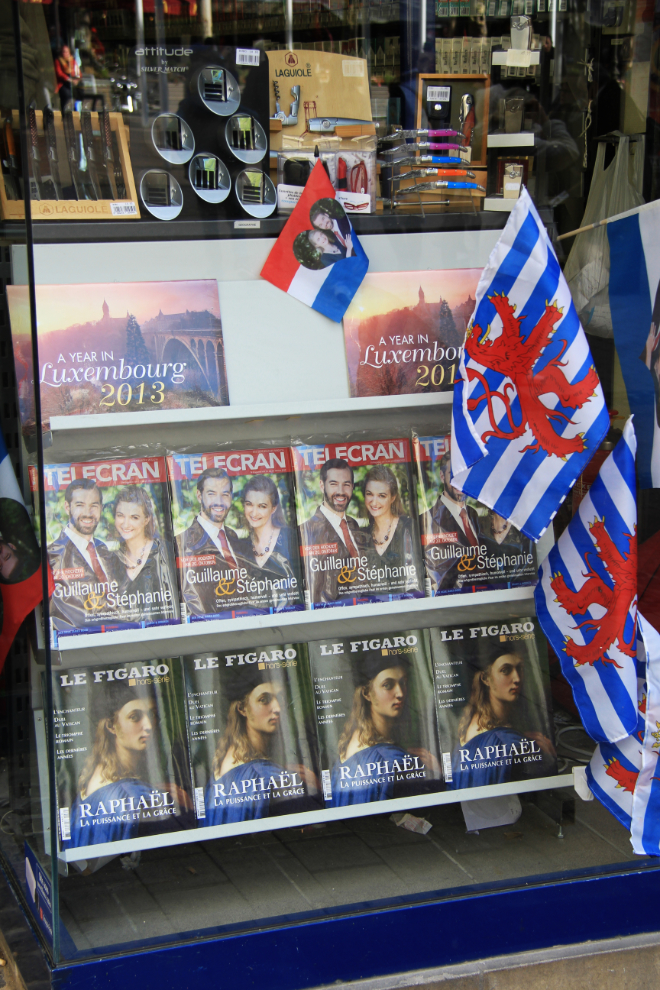
After the tour, we went for a coffee and snack.
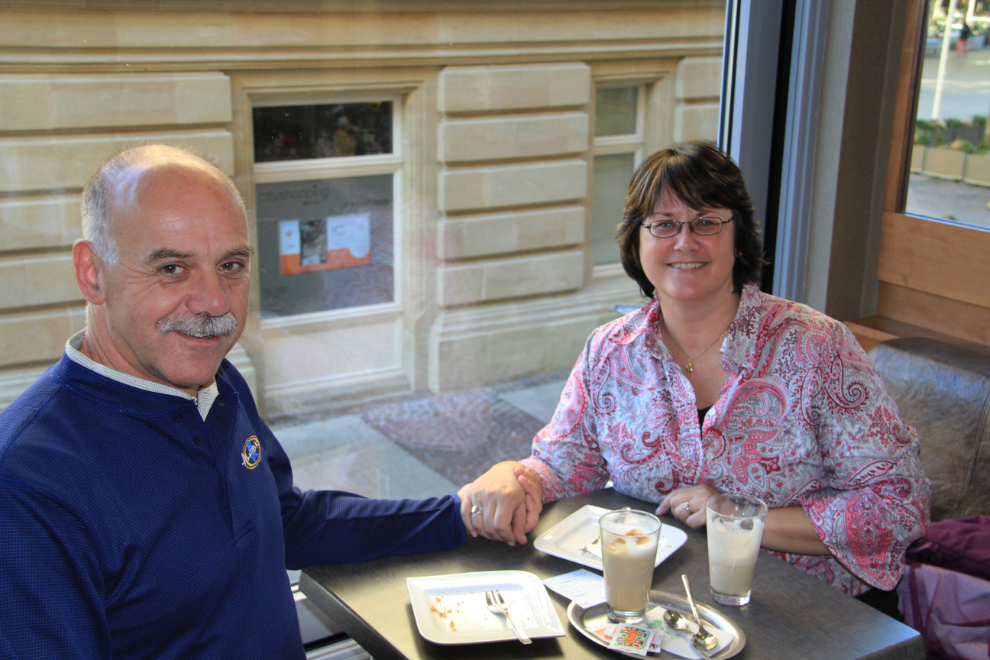
This was the view from our table, overlooking Place d’Armes, which was laid out by military engineers in about 1671.
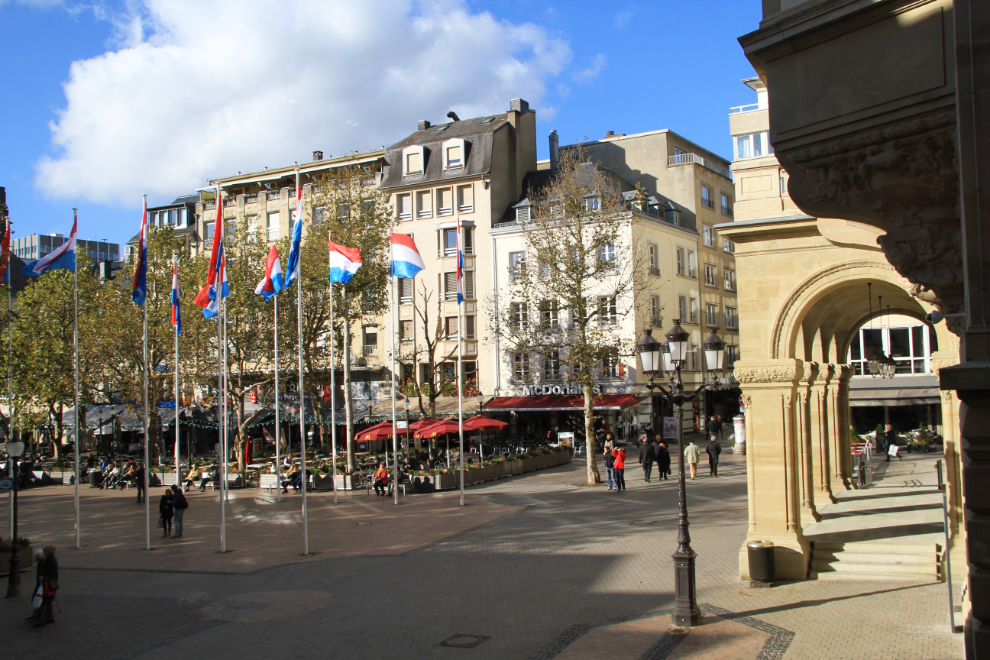
We love window shopping pastry shops. Some of their creations are so beautiful!
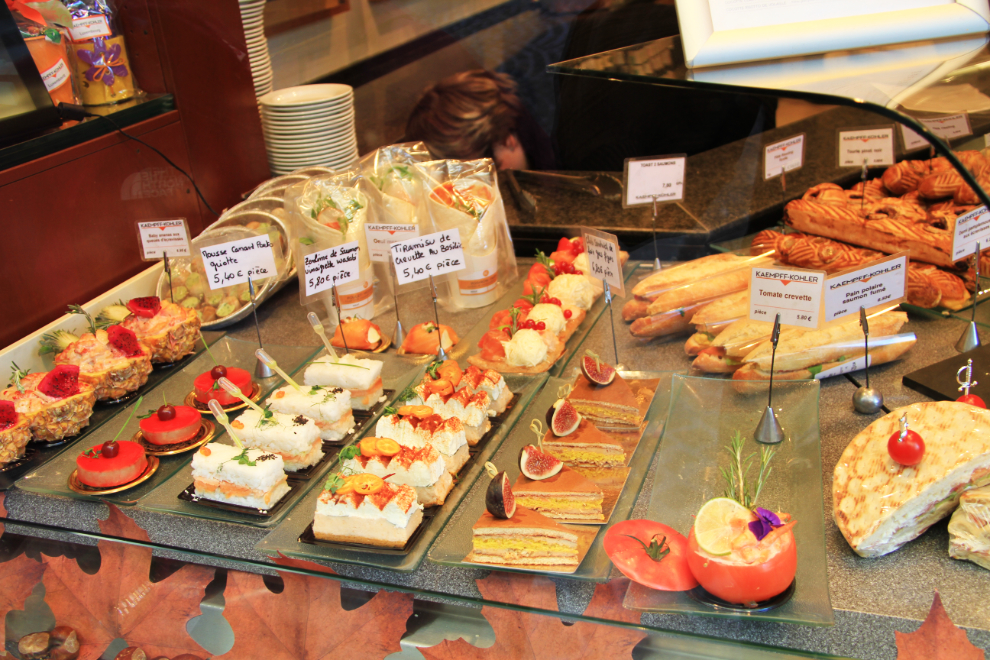
At 4:30, we boarded the coaches for the return to Trier. Our coach has a webcam hooked up to the entertainment system’s drop-down monitors so you can see out the front window – cool 🙂
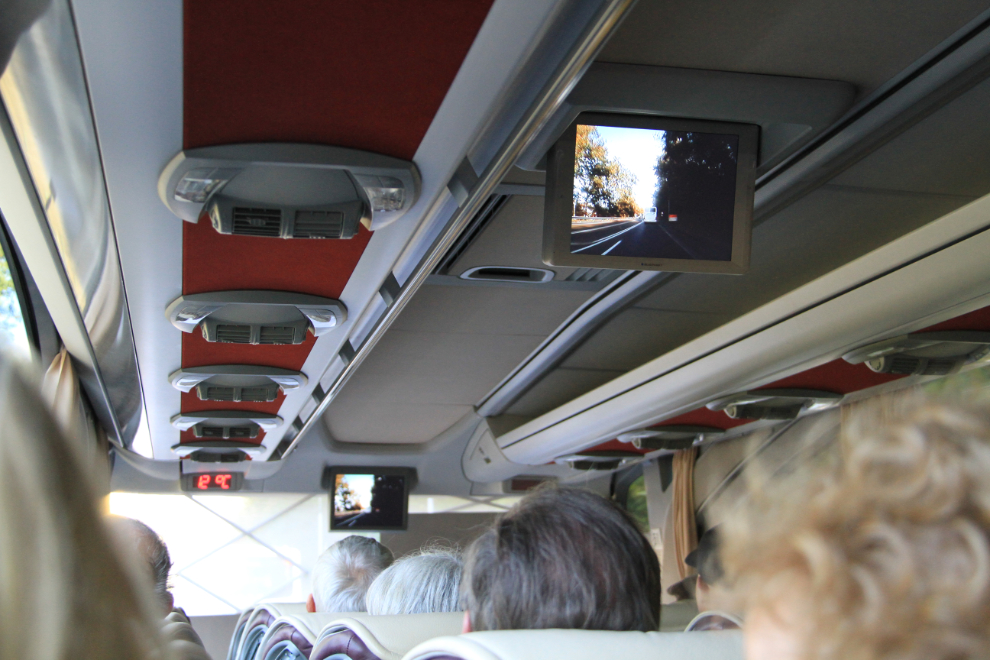
We whine about roundabouts (traffic circles) in Whitehorse – they should try one that’s 3 lanes deep and very busy!

That bridge across the highway is a wildlife crossing, completely covered in vegetation as we do in the Rocky Mountains. There are two of these crossings, and they’re apparently very controversial because of the cost and questionable benefit (does a fox really need to be on the other side of the highway?).
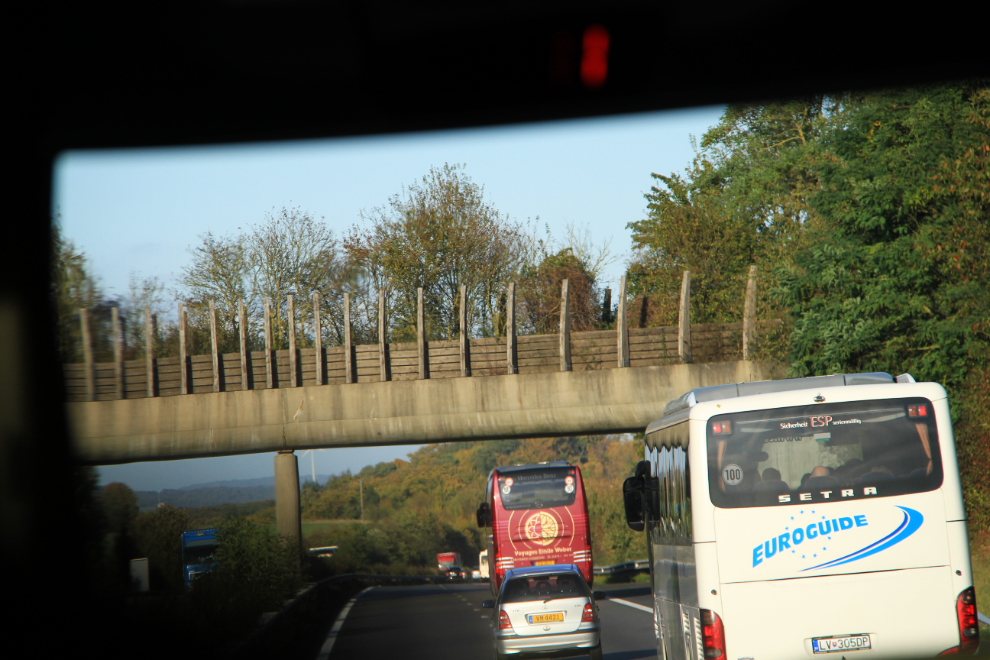
Some of the country appears to be very peaceful.
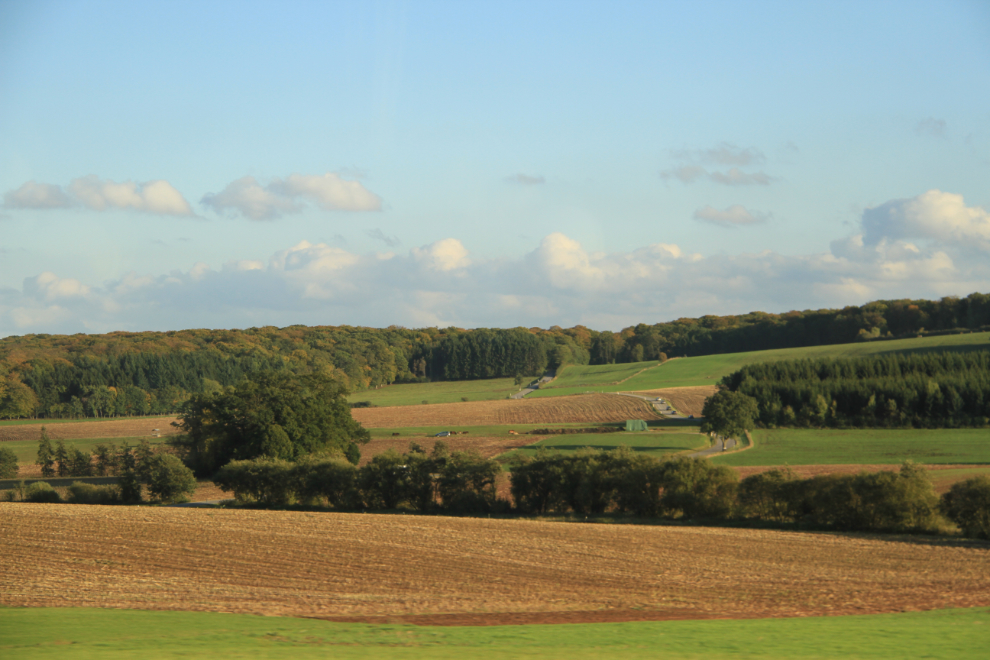
We detoured through a small town to get a glimpse of this monument from the Roman occupation period. There was no time or place to stop the buses – so much to see, so little time. As with so much travel, a brief look is much better than no look at all, though.
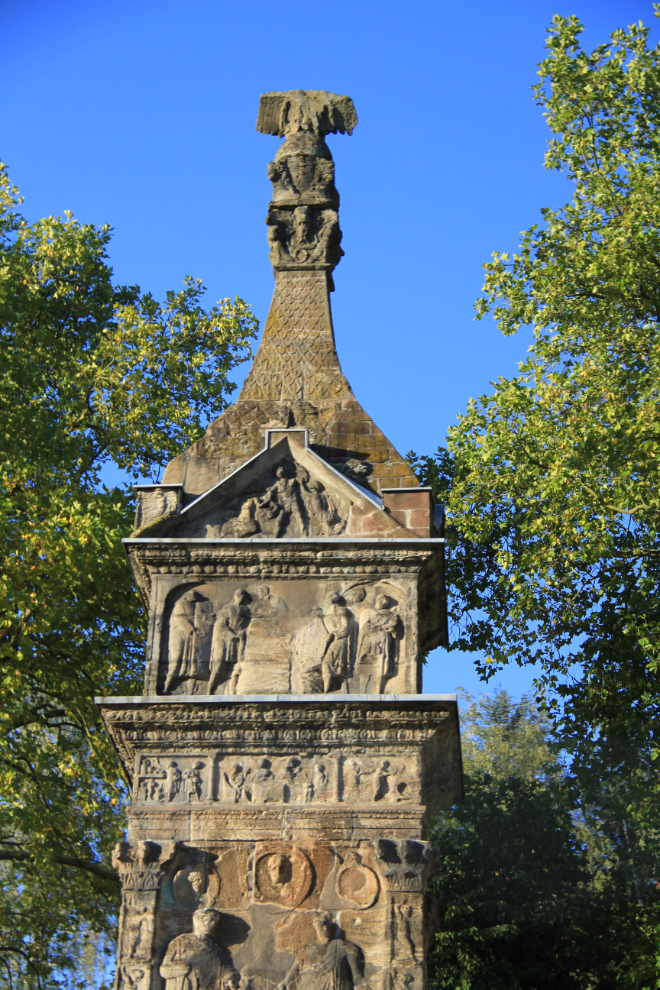
Back at the ship for a relaxing evening – tomorrow we explore Trier, which has 8 UNESCO heritage sites, several dating to the Roman period.
